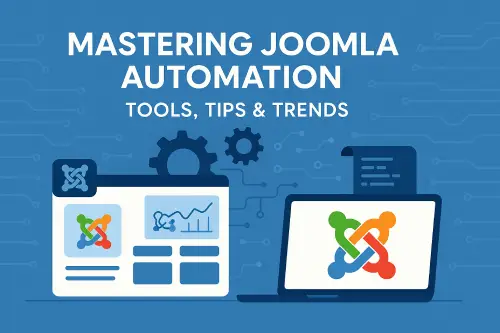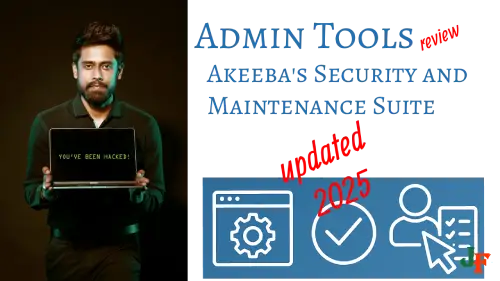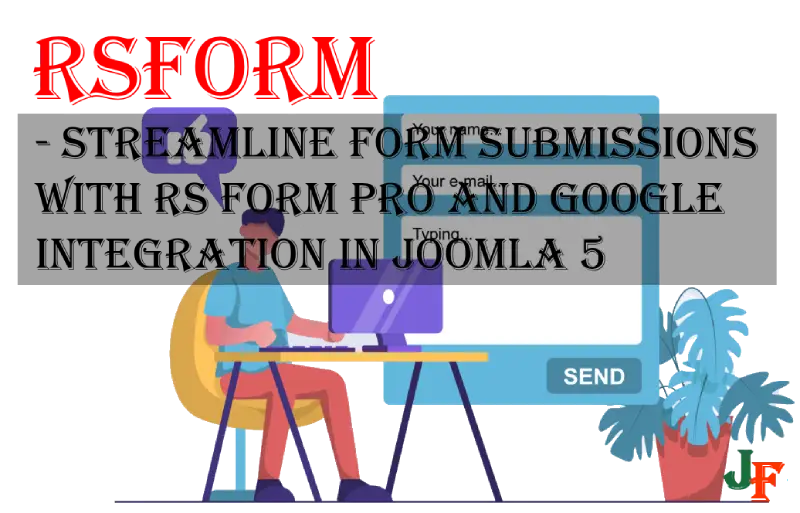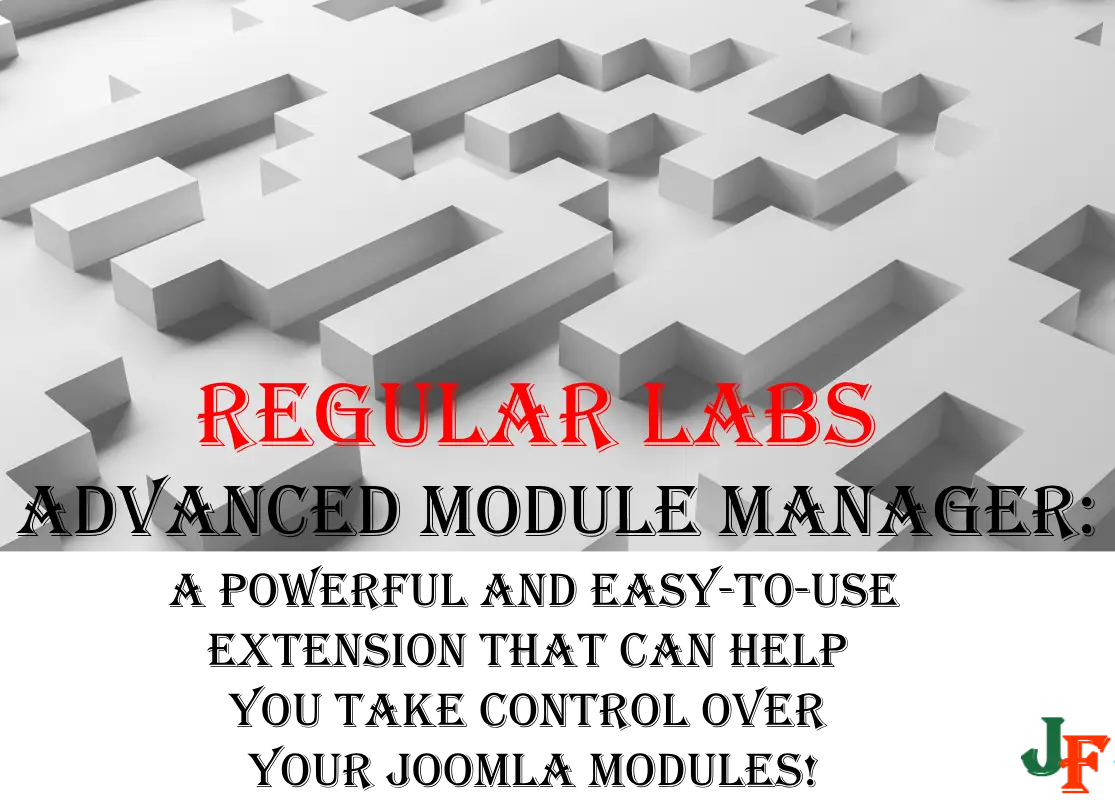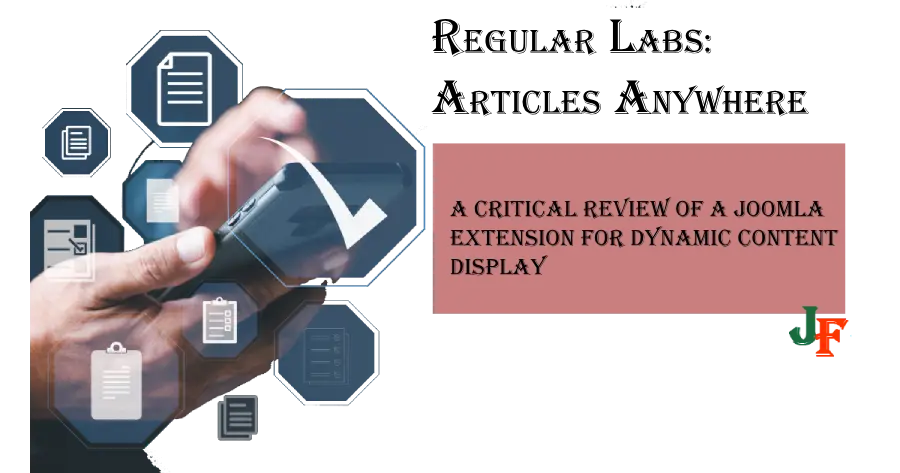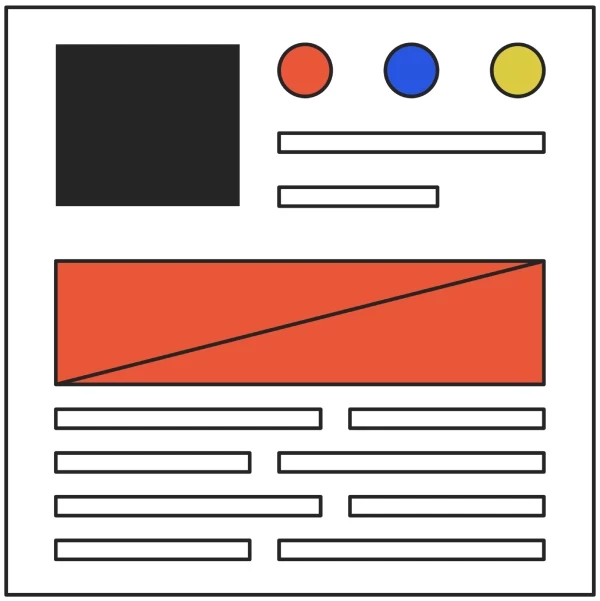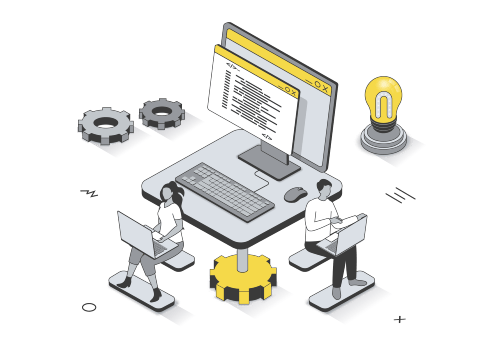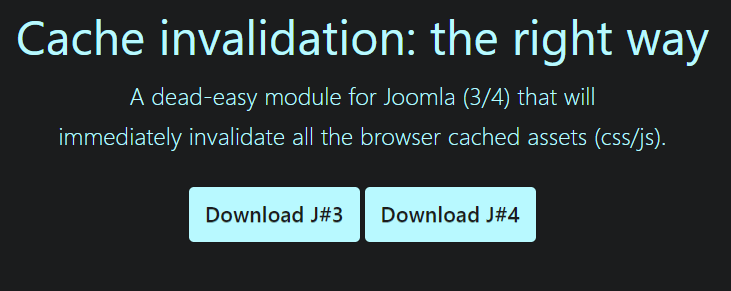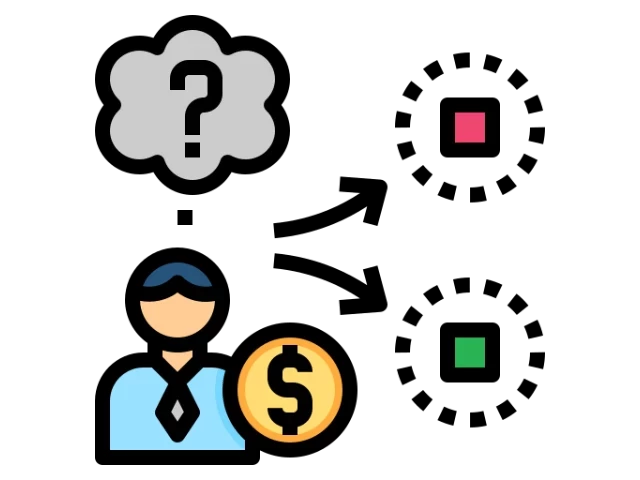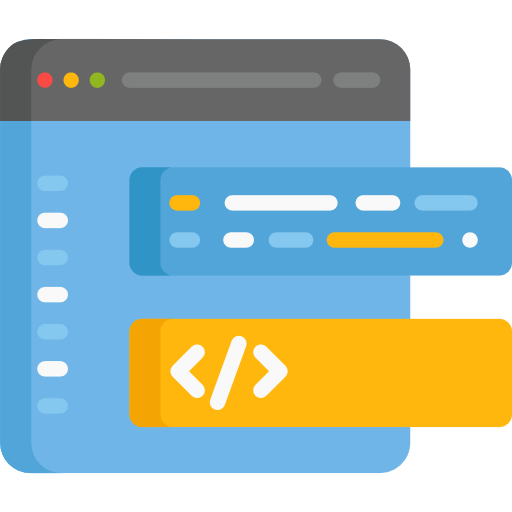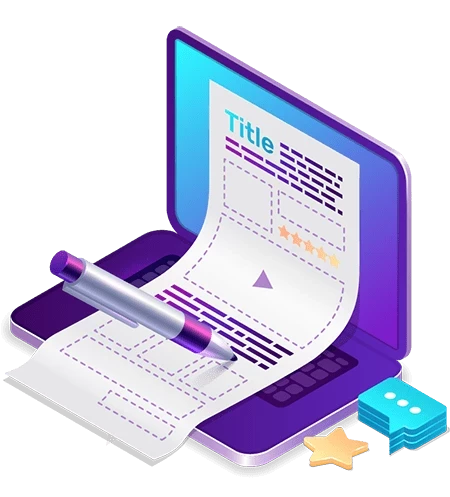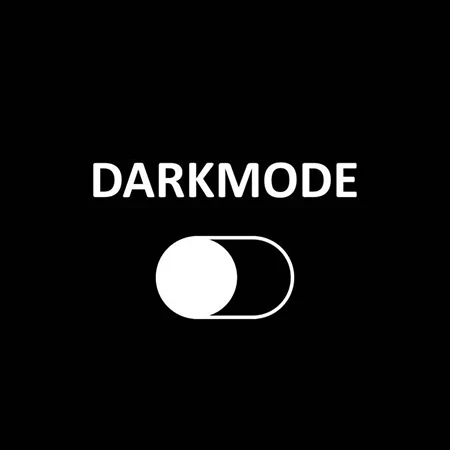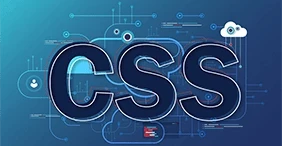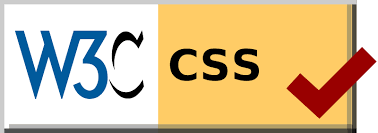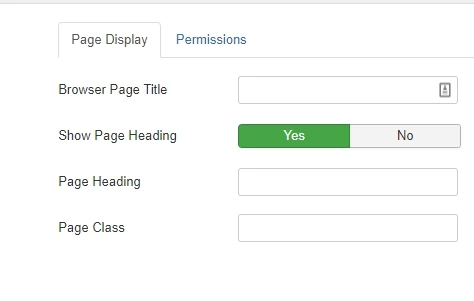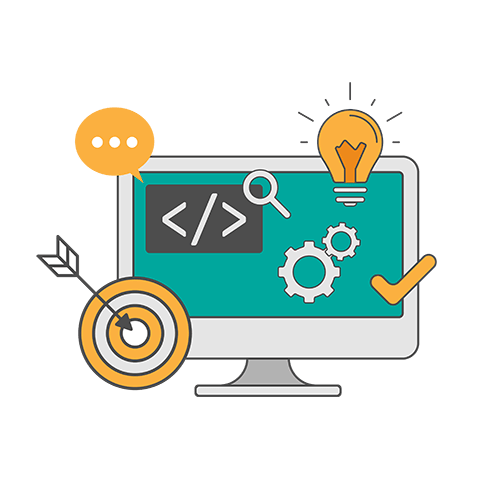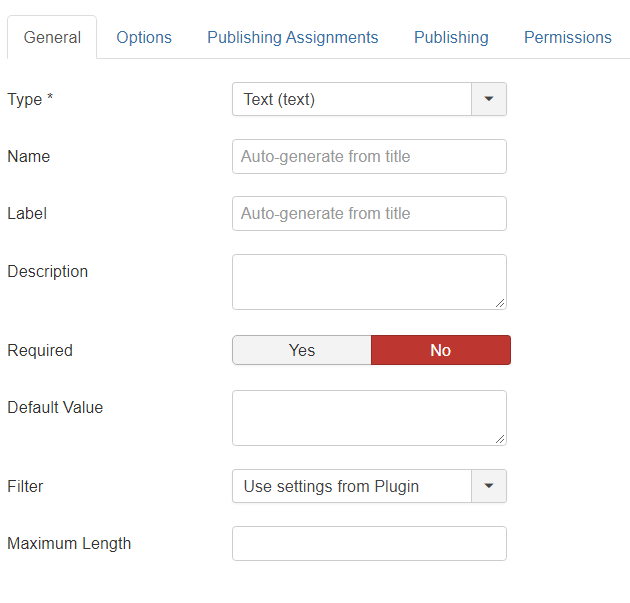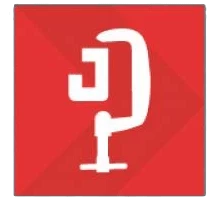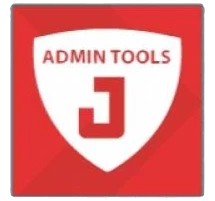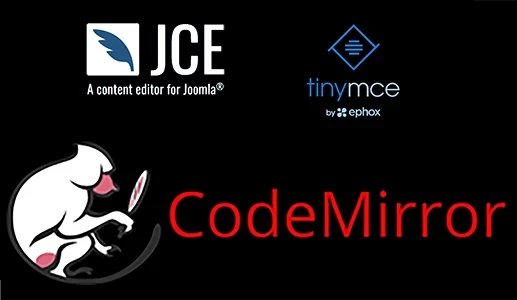Joomla is a widely-used, open-source content management system (CMS) recognized globally for its flexibility, scalability, and ease of use. It powers millions of websites ranging from personal blogs to large-scale corporate portals and government websites. Joomla provides a robust framework that allows users and developers to manage, organize, and publish content efficiently, making it a preferred platform for web development worldwide.
One of Joomla's most significant strengths is its extensibility, achieved through extensions. Extensions play a crucial role in enhancing Joomla's core functionalities by adding new features or improving existing ones. They enable developers and site administrators to customize and expand websites to meet specific requirements without modifying the CMS core. Joomla extensions come in various forms, including components, modules, plugins, templates, and languages, each serving distinct purposes in website customization and enhancement.
Understanding Joomla Extensions
Joomla extensions are software packages designed to add extra functionalities and features to a Joomla-based website. These extensions enable users to customize and enhance their websites without altering the core Joomla codebase, maintaining the integrity of the original installation and facilitating updates.
There are five primary categories of Joomla extensions:
Components: These are the largest and most complex extensions, functioning as mini-applications within Joomla. Components typically have their own administrative backend interface and provide extensive functionalities, such as forums, shopping carts, or galleries.
Modules: Modules display content or functionality within specific areas of the page, known as module positions. Common examples include menus, login forms, and banners. Modules complement and enhance the features provided by components.
Plugins: Plugins handle specific event triggers and extend the functionality of Joomla's core and installed extensions. They operate behind the scenes, performing tasks like content filtering, security checks, or integration with external services.
Templates: Templates control the visual layout and appearance of a Joomla website. Users can easily switch between different templates to change the overall look and feel of their site without affecting the underlying content.
Languages: Language extensions allow Joomla to support multiple languages, enabling website owners to create multilingual websites and cater to a global audience.
Understanding these Joomla extensions is crucial for developers planning to create their own custom extensions, as it helps in selecting the most suitable extension type based on the specific functionalities required.
Types of Extensions
Joomla provides several types of extensions, each serving a specific role in enhancing and customizing the functionality and appearance of Joomla websites.
Components
Components are the primary functional units within Joomla; they typically represent the main content or application logic of a page. Components can range from simple tools for displaying content to complex applications like e-commerce or membership management systems. They have their own backend administration interface and often include multiple views and controllers.
Modules
Modules are lightweight, flexible extensions utilized primarily for displaying information or content in specific areas on a webpage, like sidebars, headers, or footers. Modules can be repositioned easily within predefined positions in the template, making them ideal for dynamic content such as banners, menus, or latest news feeds.
Plugins
Plugins are event-driven extensions that interact with Joomla's core functionality. Rather than presenting content directly, plugins operate behind the scenes to extend and modify Joomla's behavior. They respond to particular events triggered by Joomla or other extensions, such as user authentication, content filtering, or SEO management.
Templates
Templates control the visual layout, design, and structure of Joomla websites. They define how content is presented to users, including page layout, typography, colors, navigation positioning, and responsive design elements. Templates can be customized or developed from scratch to meet specific branding and functionality requirements.
Languages
Language extensions enable Joomla sites to support multiple languages, thus providing multilingual capabilities. They include language packs, translation files, and localization features that allow website admins to offer content in various languages, facilitating wider audience reach and improved user experience.
Joomla's Global Reach
Joomla has established itself globally by supporting over 75 languages, significantly simplifying the creation of multilingual extensions (umatechnology.org). This extensive language availability allows developers to easily adapt their Joomla extensions to serve diverse international user bases, enhancing accessibility and broadening potential market reach. Through this multilingual capability, Joomla empowers developers to seamlessly cater to global audiences, promoting wider adoption and usage of Joomla-powered websites and their associated extensions.
Security Considerations in Extension Development
When developing Joomla extensions, security must be a central concern. Extensions often serve as gateways for attackers due to vulnerabilities stemming from improper coding practices or oversight in the development process. Ensuring secure development involves several key considerations:
Input Validation and Sanitization
Proper validation and sanitization of user input are critical. Developers should never trust user-submitted data, as it may contain malicious code. All input must be rigorously validated and sanitized before it is processed or stored. Joomla provides built-in functions such as Joomla\Filter\Input and methods within the Joomla framework to support effective input filtering and sanitization practices.
SQL Injection Prevention
SQL injection vulnerabilities occur when user-supplied data is directly concatenated into database queries without proper escaping or prepared statements. Joomla developers should always use the Joomla Database API, specifically employing prepared statements and parameterized queries to ensure that SQL injection attacks are mitigated.
Cross-Site Scripting (XSS) Protection
Cross-Site Scripting vulnerabilities occur when attackers inject harmful scripts into web pages viewed by other users. Joomla extensions should properly encode and escape output using Joomla's built-in functions, such as htmlspecialchars() or Joomla's JHtml helper methods, to prevent XSS attacks.
Access Control and Authorization
Implementing appropriate access control and permissions is vital. Joomla extensions should integrate Joomla's Access Control List (ACL) system to ensure that users can only access data or perform actions for which they have explicit permission.
Secure File Handling
Extensions that handle file uploads or downloads must rigorously verify file types and locations. Developers should restrict allowed file types, scan for malicious content, and store uploaded files securely outside of the web root whenever possible.
Keeping Up-to-Date
Extensions must be actively maintained and regularly updated to address newly discovered vulnerabilities. Joomla developers must monitor security advisories, patch vulnerabilities quickly, and encourage users to keep their installed extensions updated.
By adhering to these security best practices, Joomla developers can significantly reduce the risk of vulnerabilities and protect the users and websites that rely on their extensions.
Key Security Vulnerabilities
Developing Joomla extensions requires awareness of common security vulnerabilities. Two primary vulnerabilities affecting Joomla extensions are Cross-Site Scripting (XSS) and SQL Injection (SQLi).
Cross-Site Scripting (XSS)
Cross-Site Scripting vulnerabilities are prevalent issues where malicious scripts are injected into otherwise benign websites, potentially affecting end-user browsers. A recent assessment revealed that all top-10 rated Joomla extensions contained vulnerabilities related to XSS (arxiv.org). Developers must rigorously sanitize user inputs and employ robust output encoding to mitigate these vulnerabilities.
SQL Injection (SQLi)
SQL Injection attacks occur when attackers exploit vulnerabilities to execute arbitrary SQL statements, potentially compromising database integrity and confidentiality. According to research, SQL injections affect approximately 30% of the top-rated Joomla extensions (arxiv.org). Protecting against SQL injection requires careful implementation of parameterized queries, input validation, and ensuring that direct user input is never concatenated into SQL commands without proper sanitization.
By addressing these vulnerabilities proactively during the Joomla extension creation process, developers can significantly reduce the security risks associated with their extensions.
Importance of Secure Coding Practices
Secure coding practices are essential when creating Joomla extensions, as they help safeguard websites against vulnerabilities and potential cyber threats. Implementing robust security measures ensures that sensitive data remains protected and reduces the risk of unauthorized access or malicious exploitation. Developers must adhere to best practices such as validating user inputs, sanitizing database queries, and following secure authentication and authorization protocols.
Regularly updating extensions and promptly applying patches is equally crucial. Security threats evolve constantly, and timely updates help address newly discovered vulnerabilities. Extension developers should actively monitor Joomla security releases and promptly implement recommended fixes. This proactive approach enhances the overall security and stability of Joomla-based websites, significantly reducing the likelihood of successful cyber attacks.
The Development Process
Creating a Joomla extension involves several structured phases, from initial setup to final deployment. The following steps outline a clear and methodical development process:
1. Define the Extension Type and Structure
First, clearly identify the type of Joomla extension (component, module, plugin, or template) you plan to create. Each type has a distinct architecture and coding standard. For instance, components typically manage large-scale tasks and have both front-end and back-end interfaces, while plugins handle event-driven functionality.
2. Set Up the Development Environment
To efficiently develop Joomla extensions, set up a local development environment. Popular local servers include XAMPP, WAMP, or MAMP. Additionally, installing an Integrated Development Environment (IDE) like PhpStorm or Visual Studio Code will significantly streamline coding, debugging, and testing.
3. Create the Basic File Structure
Joomla extensions follow specific directory conventions. For example, the folder structure for a component usually includes:
com_extensionname/
├── admin/
│ ├── controllers/
│ ├── models/
│ ├── tables/
│ ├── views/
│ └── sql/
└── site/
├── controllers/
├── models/
└── views/
Ensure your structure matches Joomla’s MVC (Model-View-Controller) architecture guidelines.
4. Code the Functionality
With the file structure in place, start coding the primary functionality. Adhere strictly to Joomla’s MVC coding standards, leveraging Joomla’s API for database interactions, user sessions, and permissions management. Utilizing Joomla libraries, helper classes, and existing APIs ensures compatibility and security.
5. Create XML Manifest Files
Every Joomla extension requires an XML manifest file that defines the extension’s metadata, files, and installation details. This file provides Joomla with instructions on how to install, update, or remove the extension.
Example snippet of a basic XML manifest file:
<extension type="component" version="3.9" method="upgrade">
<name>ExtensionName</name>
<creationDate>2023-10</creationDate>
<author>Your Name</author>
<version>1.0.0</version>
<files>
<filename>extensionname.php</filename>
<folder>controllers</folder>
<folder>models</folder>
<folder>views</folder>
</files>
</extension>
6. Testing and Debugging
Perform thorough testing in your local development environment. Joomla provides built-in error reporting and debugging tools, which can be enabled via Joomla’s global configuration. Comprehensive testing includes verifying functionality, security checks, compatibility with Joomla core updates, and performance optimization.
7. Packaging and Distribution
After extensive testing, package your extension into a ZIP file, ensuring the XML manifest file is correctly placed at the root level. This ZIP file can then be uploaded and installed directly through Joomla’s extension manager or distributed through the Joomla Extensions Directory (JED).
Following these structured development steps ensures your Joomla extension is robust, maintainable, and compliant with Joomla standards.
Planning and Design
Before diving into building your Joomla extension, it is essential to clearly define the purpose and scope of your project. Start by identifying the specific problem or functionality gap your extension will address. Clearly outlining these objectives ensures your extension remains focused, efficient, and user-friendly.
After defining your scope, perform thorough research to explore existing Joomla extensions that fulfill similar purposes. Visit the Joomla Extensions Directory (JED) and other community resources to evaluate current solutions. Analyzing these solutions helps you understand the market, discover potential improvements, and identify opportunities to differentiate your extension.
Consider the following points during your research:
- What features are lacking in existing extensions?
- What usability improvements can you introduce?
- Can you optimize performance or offer better integration with Joomla's core features?
- Are there specific user requests or pain points in community forums or reviews?
From your research, list unique features or enhancements your extension will offer. Clearly documenting these differentiators will guide your development and provide value to your target audience.
Coding Standards and Best Practices
When creating Joomla extensions, it is critical to adhere strictly to Joomla's established coding standards. This ensures consistency, readability, and compatibility across different components and extensions. Joomla employs standards based largely on the PHP Framework Interoperability Group (PHP-FIG), particularly PSR-1 and PSR-12, to promote uniformity and maintainability. Following these guidelines helps developers write clear, understandable code, facilitating easier debugging and future updates.
Additionally, employing version control systems such as Git is highly recommended for managing codebase changes, especially in collaborative development environments. Using Git allows developers to track changes systematically, collaborate efficiently, revert to previous versions when necessary, and streamline the deployment process. Regular commits, meaningful commit messages, and well-organized branching strategies significantly enhance productivity and reduce risks associated with code conflicts and data loss.
By consistently following Joomla's coding standards and leveraging robust version control solutions, developers can ensure higher quality extensions and smoother collaborative workflows.
Testing and Validation
Thorough testing and validation is crucial when developing Joomla extensions, ensuring they perform reliably, are user-friendly, and remain secure against potential vulnerabilities. Developers should rigorously test their extensions across three primary dimensions: functionality, usability, and security.
Functionality Testing
Functional testing ensures that the extension performs its intended tasks correctly and efficiently. Developers should verify that all features operate as expected, including compatibility with different Joomla versions and configurations. This step typically involves unit testing, integration testing, and compatibility assessments.
Usability Testing
Usability assessments help guarantee that users can intuitively understand and utilize the extension. This includes evaluating the user interface (UI) for clarity and simplicity, responsiveness across multiple devices, and adherence to Joomla's UI standards.
Security Testing
Security testing is essential to detect and mitigate vulnerabilities. This involves checking the extension for common security issues such as SQL injection, cross-site scripting (XSS), and unauthorized file inclusion. Security audits should be conducted regularly, especially when updates or modifications are made.
Utilizing Joomla's Built-in and Third-party Testing Tools
Joomla provides built-in testing frameworks, such as Joomla's Unit Testing Framework, which leverages PHPUnit for robust unit testing. Developers should also leverage third-party tools like Selenium for end-to-end testing and OWASP ZAP to identify potential security threats. These tools help streamline the testing process and ensure comprehensive coverage across multiple scenarios and environments.
By combining rigorous manual testing practices with automated tools, developers can significantly enhance the reliability, usability, and security of their Joomla extensions.
Documentation and Support
Effective documentation and robust support mechanisms are critical components in Joomla extension creation. Comprehensive user guides and installation manuals are essential to help users get started quickly and efficiently. These user guides should clearly outline installation procedures, configuration options, common troubleshooting scenarios, and detailed usage examples. Including screenshots, step-by-step instructions, and frequently asked questions (FAQs) can significantly enhance user experience and reduce potential confusion.
Apart from clear documentation, providing reliable customer support is equally crucial. Establishing dedicated support channels such as forums, email support, or ticketing systems allows users to seek assistance efficiently. Actively addressing user feedback not only resolves immediate issues but also provides valuable insights for continuous improvement of the extension. Encouraging user feedback through reviews, surveys, or direct communication helps developers identify pain points and prioritize updates effectively. Maintaining open communication and promptly addressing user concerns fosters trust and satisfaction, ultimately contributing to the extension's long-term success and adoption.
Leveraging AI Tools in Extension Creation
Artificial intelligence (AI) is increasingly becoming a valuable resource for streamlining Joomla extension development. By leveraging AI tools, developers can significantly cut down on repetitive tasks, enhance code quality, and speed up the overall creation process.
AI-powered coding assistants such as GitHub Copilot, ChatGPT, and OpenAI's Codex are particularly useful in Joomla extension development. These tools provide real-time code suggestions, identify potential issues early, and help developers adhere to best coding practices. For example, GitHub Copilot assists in generating complex PHP code snippets specific to Joomla's framework, reducing the manual workload and minimizing errors.
To practically implement AI assistance in creating Joomla extensions, start by clearly defining the extension's functionality and requirements. Then, use AI tools to generate code templates, database structures, and admin interfaces. AI can also assist in troubleshooting by quickly analyzing code errors and suggesting viable solutions.
Additionally, AI-driven analytics can optimize the extension's performance by predicting usage patterns and recommending improvements. Tools like Google's Vertex AI or IBM Watson can analyze extension usage data and offer insights to further refine the user experience.
By integrating AI tools into the Joomla extension development workflow, developers can focus more on strategic decision-making and less on repetitive coding tasks, resulting in higher-quality extensions developed more efficiently. (magazine.joomla.org)
The Joomla Development Community
The Joomla development community is a vibrant, collaborative ecosystem comprising developers, designers, and users from around the globe. Members actively contribute to the development of extensions, themes, and core Joomla improvements. The community organizes itself through forums, mailing lists, social media groups, and various events such as JoomlaDays and Joomla User Group (JUG) meetups, fostering knowledge exchange and networking among members.
Developers can find support and guidance by participating in official Joomla forums, where experienced community members offer insights, troubleshooting help, and best practices. Additionally, Joomla maintains comprehensive documentation and guides, available through the official Joomla Documentation website, which serves as a valuable resource for those looking to develop their own extensions.
Open-source repositories, particularly GitHub, play a central role in Joomla's development process. Developers can contribute to existing projects, report issues, or release their own extensions publicly, thus helping advance the Joomla platform through collective collaboration.
By engaging with the Joomla development community, developers not only enhance their technical skills but also build meaningful connections, gain visibility, and actively shape the future of the Joomla platform.
Resources and Support
When developing Joomla extensions, leveraging available resources and support channels can significantly streamline the creation process and improve the quality of the final product. A primary resource is the Joomla Extensions Directory (JED), which hosts over 8,000 extensions, providing developers with a vast array of examples, inspiration, and existing solutions to common challenges (umatechnology.org).
In addition to JED, Joomla offers robust community-driven support channels. Developers can access comprehensive documentation provided by the official Joomla documentation site, covering topics from beginner-level tutorials to advanced extension development guidelines. Community forums are also available, where developers can engage directly with experienced Joomla community members to troubleshoot issues, share knowledge, and discuss best practices.
Moreover, Joomla regularly organizes community events and meetups. These events, including JoomlaDays and Joomla User Group meetings, facilitate networking, knowledge sharing, and collaboration among developers, helping participants stay updated on the latest developments, tools, and strategies for Joomla extension creation.
Market Presence
Joomla currently holds a 3.1% market share among content management system (CMS) platforms (umatechnology.org). Although smaller than leaders such as WordPress, Joomla maintains a dedicated user base and active community support. Its presence in the market emphasizes opportunities for developers interested in extension creation, offering a niche but consistent demand for quality Joomla extensions.
Conclusion
Creating secure and functional Joomla extensions is crucial for ensuring the stability, security, and usability of Joomla-based websites. Properly developed extensions not only enhance the core functionality of Joomla but also protect websites from vulnerabilities and potential security threats. Developers are encouraged to utilize available community resources, such as official Joomla documentation, forums, and developer communities, to stay informed about best practices and emerging standards. Adhering closely to established guidelines and actively engaging with the Joomla developer community can significantly improve the quality and effectiveness of extensions, ultimately contributing to the overall health and reliability of the Joomla ecosystem.
Introduction
Overview of Joomla Extensions
Joomla extensions are essential components that significantly enhance Joomla's core functionality, enabling developers and site administrators to tailor websites to specific requirements. Extensions empower users by adding diverse features such as enhanced security, e-commerce capabilities, SEO optimization, and specialized content management tools. The flexibility offered by these extensions makes Joomla a highly versatile and powerful content management system (CMS) suitable for various applications, from simple blogs to comprehensive enterprise portals.
Joomla Extensions Directory (JED)
The Joomla Extensions Directory (JED) serves as the central repository for Joomla extensions, listing over 8,000 extensions. This extensive library offers developers and administrators a broad range of tools to customize and extend their Joomla installations according to their specific needs (umatechnology.org). Ranging from simple plugins to complex components, the JED provides detailed information, reviews, and ratings, allowing users to make informed decisions on the best extensions to integrate into their websites.
Understanding Joomla's Global Reach
Multilingual Capabilities
Joomla's widespread adoption around the globe is significantly bolstered by its robust multilingual capabilities. This CMS is currently available in over 75 languages, enabling developers and content creators globally to build and distribute content seamlessly across various linguistic and regional markets (umatechnology.org). This multilingual support extends directly to Joomla extensions, allowing developers to easily create extensions that cater to international audiences. By leveraging Joomla's built-in multilingual infrastructure, extension creators can ensure their products appeal to a broader demographic, fostering greater usability and global reach.
Security Considerations in Extension Development
Analysis of Common Vulnerabilities
When developing Joomla extensions, it's essential to be aware of common security vulnerabilities. Two of the most prevalent vulnerabilities found in Joomla extensions are Cross-Site Scripting (XSS) and SQL Injection (SQLi). A recent study analyzed top-rated Joomla extensions and found many were still susceptible to these vulnerabilities, highlighting the critical need for developers to implement robust security measures (arxiv.org).
XSS vulnerabilities can allow attackers to inject malicious scripts into web pages, potentially compromising user data and session information. Similarly, SQL injection vulnerabilities expose database structures and data, potentially leading to unauthorized data access or manipulation.
Best Practices for Secure Coding
To mitigate these vulnerabilities, Joomla extension developers must adhere to secure coding best practices. Essential practices include input validation, prepared statements for database queries, and output encoding.
- Input validation: Always validate and sanitize user input on both client and server sides to prevent malicious data from entering the application.
- Prepared statements: Use parameterized queries rather than dynamically constructed queries to prevent SQL injection attacks.
- Output encoding: Properly encode outputs to prevent XSS attacks, ensuring that any user-supplied data displayed on web pages is correctly escaped and encoded.
Implementing these secure coding standards is crucial not only for protecting user data but also for maintaining the reputation and integrity of Joomla extensions.
Market Presence and Community Support
Joomla's Market Share
Joomla currently holds a 3.1% market share among content management systems, signifying a substantial and robust user base (umatechnology.org). This market presence underscores Joomla's continued relevance and widespread adoption, making it a viable platform for developers interested in creating extensions.
Community Contributions
Joomla benefits from a highly active and engaged community, which regularly contributes to the development and enhancement of the platform. Developers can access extensive support resources, including forums, documentation, and tutorials, provided by the community. This strong network of users and developers ensures continuous improvement and extensive support for extension creation and troubleshooting.
Step-by-Step Guide to Creating Joomla Extensions
Planning Your Extension
Before you begin development, clearly define the purpose and functionality of your Joomla extension. Identify what problem the extension will solve, who the target audience is, and the essential features it needs to include. This step ensures your development process remains organized and goal-oriented.
Development Tools and Resources
Leveraging modern tools can significantly streamline the Joomla extension development process. AI tools, for instance, can assist with code generation, error detection, documentation, and optimizing overall efficiency. Joomla's official magazine highlights the value of integrating AI into your development workflow to speed up the coding process and reduce mistakes (magazine.joomla.org). Additionally, consider utilizing popular code editors such as Visual Studio Code or Sublime Text, and keep Joomla's official documentation and developer forums handy for guidance.
Coding and Testing
Quality coding practices are critical for developing a reliable Joomla extension. Write clean, efficient, and secure PHP code, following Joomla's coding standards. Regularly test your extension on different Joomla versions and server environments to ensure compatibility and security. Conduct comprehensive tests including functionality testing, security assessments, and performance checks. Adhering to best practices in code quality and rigorous testing will ensure your extension functions effectively and securely.
Publishing and Marketing Your Extension
Submitting to JED
After you've thoroughly tested your Joomla extension, the Joomla Extensions Directory (JED) is the ideal platform to showcase your product and gain visibility. To submit your extension to JED, follow these steps:
Create an Account: Register at the Joomla Extensions Directory (extensions.joomla.org) if you haven't already.
Check Submission Requirements: Review the JED submission guidelines carefully. Ensure your extension complies fully with Joomla's licensing, security, and coding standards.
Prepare Your Extension: Package your extension according to Joomla's standards. Include clear documentation and screenshots to illustrate functionality.
Submit Your Extension: Log into your JED account, navigate to the submission area, and complete the form. Clearly describe your extension's functionality, features, and benefits.
Review and Approval: Once submitted, your extension will be reviewed by the JED team. Approval typically takes several days, but the timeline may vary based on submission volume. Respond promptly to any communications from reviewers to expedite this process.
Promoting Your Extension
Publishing your extension on the JED is just the first step. Effective marketing is critical to gaining users and establishing a strong presence within the Joomla community. Consider these strategies:
Leverage Joomla Community Forums: Actively engage in discussions, provide helpful insights, and authentically mention your extension where relevant.
Social Media Outreach: Announce your extension on social media platforms such as Twitter, LinkedIn, and Facebook. Utilize Joomla-specific hashtags and groups to target your ideal audience.
Content Marketing: Produce helpful tutorials, blog posts, or demo videos. Demonstrating the practical value of your extension helps attract users and build credibility.
Collaborate with Joomla Influencers: Reach out to prominent Joomla bloggers and influencers for reviews or mentions of your extension.
Collect User Feedback: Encourage early users to provide feedback and testimonials. Positive reviews and testimonials can significantly boost your extension's credibility and visibility.
By strategically submitting your extension to the JED and engaging in proactive marketing efforts, you position your Joomla extension for optimal visibility and adoption within the community.
Conclusion
Summary of Key Points
Creating Joomla extensions requires a clear understanding of several critical factors. Security must remain a top priority, as vulnerabilities in extensions can compromise entire Joomla installations. Developers must adhere to best practices and proactively patch security issues. Community support is equally crucial, as active communities help developers troubleshoot, improve features, and ensure longevity for their extensions. Moreover, market presence directly impacts adoption rates and sustainability—extensions with good reputations, clear documentation, and regular updates tend to thrive.
Future Trends in Joomla Extension Development
Looking ahead, Joomla extension development will likely see increased integration with modern web technologies and frameworks. Developers might increasingly use APIs and headless CMS approaches to achieve greater flexibility and interoperability with other platforms. Additionally, AI and machine learning tools could significantly enhance extension capabilities, offering personalized experiences and advanced analytics. As technology evolves, Joomla developers will need to remain adaptable, continually updating their skills and embracing new tools to create robust, secure, and user-friendly extensions.
Introduction
Overview of Joomla
Joomla is a widely-used, open-source content management system (CMS) known for its flexibility and ease of use. It allows users to manage and publish digital content efficiently, catering to websites ranging from personal blogs and corporate portals to online shops and government applications. Joomla's appeal largely stems from its robust structure, user-friendly interface, and strong community support.
Importance of Extensions in Enhancing Joomla's Functionality
One core strength of Joomla resides in its extensibility. Extensions are additional components, modules, plugins, and templates that significantly expand Joomla's native capabilities. They empower developers and site administrators to add new features, enhance usability, and customize website behavior to meet specific requirements. By creating or utilizing extensions, Joomla users can tailor websites precisely to their business or personal needs, improving functionality and offering richer user experiences.
Understanding Joomla's Global Reach
Multilingual Capabilities
Joomla stands out for its robust multilingual capabilities, available in over 75 languages, which significantly enhances its global appeal and usability (umatechnology.org). This multilingual support fosters broader engagement by allowing users around the globe to interact seamlessly with Joomla-powered websites and extensions in their native languages.
Implications for Developers
For developers, Joomla's multilingual features offer considerable advantages, particularly in the creation of extensions. Developers can easily build multilingual extensions, which simplifies the localization process and significantly reduces the time and resources required for internationalization. This capability directly translates into expanded market opportunities, enabling developers to reach diverse audiences and effectively cater to users from different regions and language backgrounds.
Joomla Extensions Directory (JED)
Overview
The Joomla Extensions Directory (JED) serves as the official platform for Joomla users to discover and access extensions that enhance the functionality of their Joomla websites. Hosting over 8,000 extensions, the JED provides a diverse range of tools covering categories such as e-commerce, social media integration, SEO optimization, forms management, and more (umatechnology.org). These extensions, developed by the Joomla community, include components, modules, plugins, templates, and language packs, each designed to expand Joomla's capabilities and meet specific site management needs.
Finding Inspiration and Tools
Navigating the JED effectively can significantly streamline the process of developing a new Joomla extension. By exploring existing solutions, developers can identify gaps, determine the types of extensions that are popular or underserved, and find inspiration for unique features or improvements. The JED offers advanced filtering and categorization, allowing users to quickly locate extensions by category, rating, compatibility, and popularity. Carefully examining user reviews, ratings, and support documentation also provides valuable insights into user preferences and common challenges. This analysis helps developers understand market demands and guides them in creating solutions that resonate with the Joomla community.
Security Considerations in Extension Development
Common Vulnerabilities
When developing Joomla extensions, it's essential to be aware of common security vulnerabilities. A recent study highlighted that even top-rated Joomla extensions suffer from vulnerabilities such as Cross-Site Scripting (XSS) and SQL Injection (SQLi), posing significant risks to websites (arxiv.org). These vulnerabilities can lead to unauthorized access, data theft, and compromise of website integrity.
Best Practices for Secure Coding
To mitigate these risks, developers must adopt secure coding practices. Key practices include rigorous input validation, proper sanitization of user inputs, and parameterized database queries to protect against SQL injection attacks. Additionally, encoding outputs correctly and adhering strictly to Joomla's built-in security guidelines can significantly reduce the risk of XSS vulnerabilities.
Regular updates and timely application of security patches are crucial. Joomla continuously releases updates addressing known security issues, and extensions must align with this practice. Conducting periodic security audits and vulnerability assessments helps identify potential weaknesses early, allowing for prompt remediation and enhanced protection of Joomla websites.
Step-by-Step Guide to Creating Joomla Extensions
Getting Started with Joomla Extension Development
Before diving into Joomla extension development, it's crucial to set up a reliable development environment. Start by installing a local server environment such as XAMPP, WAMP, or MAMP, which provides essential components like Apache, MySQL, and PHP. Next, install the latest version of Joomla onto your local server, ensuring all dependencies and permissions are correctly configured.
Understanding Joomla's Model-View-Controller (MVC) architecture is fundamental. Joomla employs a clear separation of concerns through MVC:
- Model: Manages data, logic, and business rules.
- View: Handles the presentation of data to the user.
- Controller: Processes user input and interacts with models and views accordingly.
Familiarizing yourself with Joomla's MVC will streamline your development process and improve maintainability.
Coding Your First Extension
Every Joomla extension has a defined file structure. At a minimum, your extension folder should include:
mod_yourextensionname.php(main entry point)mod_yourextensionname.xml(metadata and installation instructions)/tmpl/default.php(template for displaying output)
This structure can vary depending on the extension type (component, module, or plugin), but these files form the essential foundation.
Practical Coding Examples
Here is a simple module example:
<?php
defined('_JEXEC') or die;
// Retrieve parameters from module configuration
$greeting = $params->get('greeting', 'Hello Joomla World!');
require JModuleHelper::getLayoutPath('mod_yourextensionname', $params->get('layout', 'default'));
Corresponding default.php template file:
<?php defined('_JEXEC') or die; ?>
<div class="mod_greeting">
<?php echo htmlspecialchars($greeting); ?>
</div>
Best Practices
- Always sanitize and validate user input to ensure security.
- Use Joomla's built-in classes and methods whenever possible to maintain compatibility and consistency.
- Keep extension logic separated clearly from presentation.
Testing and Debugging
Effective testing and debugging are essential for successful Joomla development:
- Enable Joomla's debug mode (
Global Configuration -> System -> Debug System) to display detailed error information. - Use browser developer tools and extensions such as Firebug or Chrome DevTools for debugging JavaScript and CSS issues.
- Review Joomla's logs located in the
/administrator/logs/folder regularly for error tracking.
Employing these practices ensures efficient identification and resolution of issues during development.
Leveraging AI in Extension Development
AI Assistance
The integration of Artificial Intelligence (AI) into Joomla extension development has significantly streamlined the creation process, enhancing both speed and efficiency. AI tools can assist developers by automating repetitive coding tasks, identifying errors early, and providing intelligent suggestions to optimize code structure. By leveraging AI-driven platforms, developers can generate boilerplate code, configure complex settings, and test extensions more efficiently, reducing manual effort and accelerating project timelines (magazine.joomla.org).
Case Studies
Several practical examples highlight the value AI can bring to Joomla extension development:
Content Management Extensions: An AI-driven Joomla extension successfully automated metadata tagging and SEO optimization for articles, significantly improving website search visibility and content discoverability.
E-commerce Solutions: Developers utilized AI to create a Joomla extension that integrated predictive analytics and personalized recommendations. This resulted in increased customer engagement and higher sales conversions.
Security Enhancements: AI-powered extensions have been developed to monitor Joomla sites in real-time, proactively identifying and mitigating potential security vulnerabilities before they can be exploited. This proactive approach has led to substantial improvements in website security and reliability.
These examples underscore the tangible benefits of AI integration, demonstrating substantial improvements in efficiency, user experience, and overall extension performance.
Community and Support
Joomla’s Market Share and Community
Joomla currently holds a 3.1% share of the CMS market, reflecting its substantial user base and robust community support (umatechnology.org). This widespread usage has resulted in a vibrant and active community, essential for developers working on Joomla extensions.
Participating in the Joomla Community
Developers looking to create Joomla extensions benefit significantly by actively participating in Joomla’s community. Various forums, user groups, and online resources are available, offering valuable support, knowledge-sharing, and collaboration opportunities. Engaging with these resources helps developers stay updated with best practices, troubleshoot issues, and gain insights from experienced Joomla developers.
Additionally, developers can contribute directly to Joomla’s open-source projects, enhancing their skills and reputation within the community. Regular contributions, such as bug fixes, feature implementations, or documentation updates, not only improve the Joomla ecosystem but also provide developers with greater visibility and credibility in the broader Joomla community.
Conclusion
Future of Joomla Extensions
The Joomla extension ecosystem continues to evolve, driven by emerging technologies and user expectations. Trends indicate a strong shift toward extensions that prioritize user experience (UX), accessibility, and seamless integration with third-party tools and services. Additionally, the adoption of modern JavaScript frameworks, headless CMS approaches, and API-driven development practices are expected to shape future Joomla extension development significantly.
Moreover, developers will increasingly focus on security and performance optimization, aligning with users' growing demand for fast, secure, and stable extensions. As Joomla continues to evolve, opportunities will emerge for innovative solutions that enhance functionality and usability.
For developers, this presents a valuable opportunity to innovate, experiment, and actively contribute to the Joomla ecosystem. Engaging with the broader community, sharing knowledge, and collaborating on open-source projects will not only benefit individual extensions but also enrich the Joomla platform as a whole. By adapting to these emerging trends and proactively addressing user needs, developers can ensure that Joomla remains a competitive and robust CMS choice for years to come.
References
Joomla Documentation. (2023). Developing a Basic Joomla! Module. Retrieved from https://docs.joomla.org/DevelopingaBasic_Module
Joomla Documentation. (2023). Creating a Simple Plugin. Retrieved from https://docs.joomla.org/Creatingasimple_plugin
Joomla Documentation. (2023). Component Development. Retrieved from https://docs.joomla.org/J3.x:DevelopinganMVC_Component
Hagen Graf. (2022). Joomla! 4 Masterclass: A practitioner's guide to building Joomla! extensions. Packt Publishing.
Mark Dexter, Louis Landry. (2020). Joomla! 3 Explained: Your Step-by-Step Guide to Joomla! 3. Addison-Wesley Professional.
Tim Plummer. (2021). Learning Joomla! 4 Extension Development. Packt Publishing.




